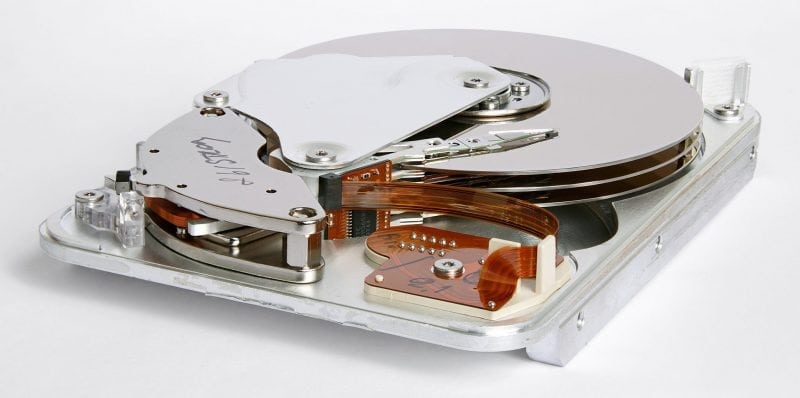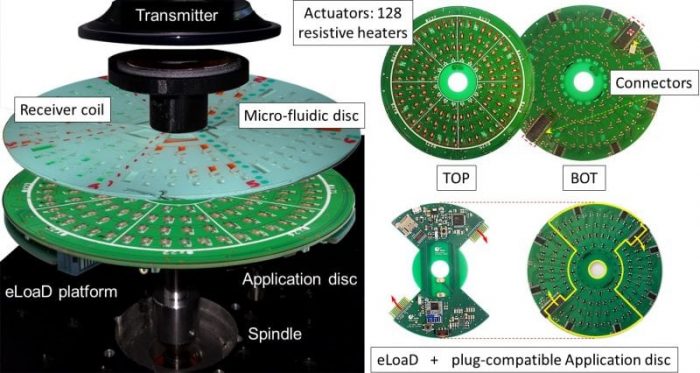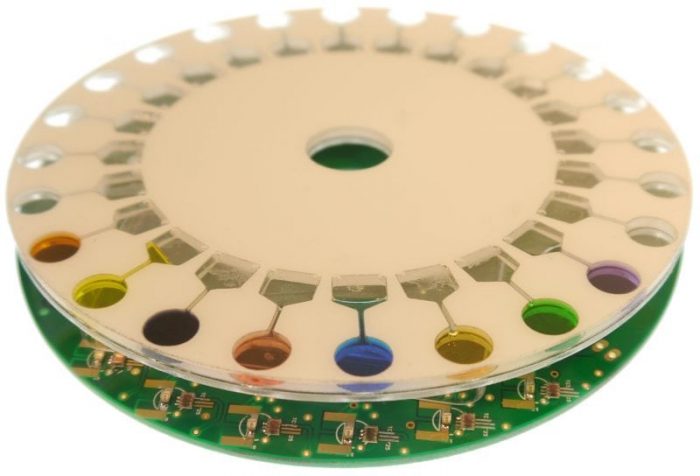
Since the early 1980s, researchers have been working to develop “Lab-on-a-Chip” systems. These miniaturized platforms integrate the tasks typically implemented by scientists on the bench, such as metering, aliquoting, mixing etc., into systems that are sometimes just the size of a credit card. This small part of the ongoing automation revolution offers the potential to improve the lives of the typical lab scientist.
Lab-on-a-Chip offers the potential to significantly reduce the volume (and, therefore, cost) of reagents used in experiments. It can be used to generate results which are of more sensitive and more repeatable than those compared to benchtop experiments. The reduced volume also has ethical advantages; an experiment that might once have needed a venous blood draw can be performed on a finger-prick of blood, or when venous blood is needed, a patient sample might be used in hundreds of tests rather than just one or two. By automating common lab protocols, Lab-on-a-Chip can also free scientist up to spend more time planning new experiments and analyzing existing data.
Alongside making the lives of scientists a little easier, Lab-on-a-Chip also offers potential to bring medicine into new areas. In one of the most striking advances, DNA sequencing, which required many large benchtop machines to complete the Human Genome Project, can now be completed on a chip the same size as a USB key. Lab-on-a-Chip systems can also enable new experiments and diagnostics which cannot be performed in a conventional lab. For example, Lab-on-a-Chip can use flow phenomena at the micro-scale to select, by size, the Circulating Tumour Cells (CTCs) which are a cause of metastasis in cancer. In another area, the emerging area of Organ-on-a-Chip it allows scientists to conduct experiments on tissue without the ethical issues of animal testing.

Architecture of the ELoaD Platform (Image credit: Dario Mager & Saraí M. Torres-Delgado)
Lab-on-a-Chip also has huge potential for outside of research and centralized laboratories. This field, called “point-of-care” in human health or “point-of-use” in environmental monitoring, animal health diagnostics, food testing, customs screening, and similar applications, effectively brings the lab into the field but can can also provide fast and reliable diagnostic tests which might be needed in a timely manner in a conventional clinic. For example, a point-of-care device might be used for Emergency Room (ER) testing for acute diseases, such as sepsis and bacterial meningitis, rather than needing to wait for the centralized hospital lab, which might be closed overnight in smaller hospitals, to conduct a test. Another area is HIV diagnostics. Currently, while Anti-Retroviral Therapies (ART) are now widely available in developing countries there is often a bottle-neck in the treatment cascade relating to diagnostics. In areas with poor infrastructure, low literacy, and under-developed postage systems, a person may be “lost to follow-up” if they cannot be provided with a diagnostic result while they are still in the clinic.
The use of Lab-on-a-Chip systems in the field does have some major challenges, not least the so-called “Chip-in-the-Lab.” Here, at the research and development stage, a small miniaturized chip will be surrounded by large and power-hungry precision pumps, valving systems, data acquisition systems, and detectors. However, two types of Lab-on-a-Chip platforms show great potential for avoiding these issues. One is the area of paper microfluidics. Here, a paper is patterned and modified so that diagnostics tests can be conducted without the need for any pumps or sensors. These systems are effectively highly advanced versions of the common pregnancy test. The other systems offering great potential is the Lab-on-a-Disc platform.
In the Lab-on-a-Disc (LoaD), or centrifugal microfluidic platform, the microfluidic chip is miniaturized into the same shape as a typical DVD or CD. By rotating the disc about its center axis, liquid can be pumped from the center of the disc to the edge of the disc using just a low-cost spindle motor rather than a specialized micro-pump. In addition, all the common benchtop operations conducted by laboratory scientists can be automated on the chip including washing of active surfaces, metering and aliquoting. Mixing, often a challenge in microfluidics, can be enhanced by using the Euler Force – the force acting on liquids on the disc as the chip is accelerated and decelerated between two spin-speeds; in effect, the chip is “shaken.” And, of course, centrifugation is built into the chip and so can be easily applied to process blood and sediment particles.
A major challenge in centrifugal microfluidics is controlling the movement of liquid on the disc. As the centrifugal force acts on all the liquids all the time, the correct sequence of operations can only be implemented by opening valves in the correct order — a challenge when the disc might be rotating up to 100 times per second. There are a number of different valving technologies. One approach is to stop the disc between each laboratory step and open the valve by interacting with the disc; this could be through, for example, using a laser to melt wax plugs located in the disc.

ELoaD Application Disc for Colorimetric Sensing (Image credit: Dario Mager & Saraí M. Torres-Delgado)
Another option is to change the speed at which the disc is spinning to change the centrifugal force acting on the liquid. By speeding up the disc, the liquid can be forced through capillary valves; these are small constrictions in channels, and typically the smaller the constriction, the faster the disc must spin to force the liquid through them. Conversely, a siphon valve is opened by slowing down the disc so liquid can creep up through a channel, against the centrifugal force, to prime a siphon. These rotationally-controlled valves are very useful as they only need the spindle motor to operate; there is no need for additional equipment (such as a laser) and this makes the LoaD support instrument light, cheap, and robust and so very suitable for the point-of-use. However, a draw-back of rotationally controlled valves is that often the capillary and siphon valves can be difficult to manufacture with great reliability, and so the number of lab steps that can be automated can be limited.
Recently, Torres-Delgado and co-workers introduced a new concept in centrifugal microfluidics called the Electrified Lab-on-a-Disc (ELaoD). In this platform, they designed an Arduino controller, complete with Bluetooth communication, in a modular format which can sit underneath a disc. To power this system, they configured a wireless power transfer system adapted from mobile phones. Using this platform, they were able, without any external wiring, to co-rotate a disc and micro-controller while providing power using the wireless phone charger.
The multinational team from the University of Freiburg, Dublin City University, and the Karlsruhe Institute of Technology demonstrated the flexibility of their system by using it to control up to 64 separate laboratory actions on a Lab-on-a-Disc. To do this, they created an ELoaD with 64 individual heaters. The microfluidic disc used valves which are composed of two membranes. The first membrane is a dissolvable film, similar to that commonly used in dishwasher tablets, and the other is a wax film which is air-tight and melts at a low temperature (60°C). These valves are designed so that, with both membranes intact, a pocket of trapped air prevents liquid from entering the valve. As the disc rotated, by heating one of the individual heaters, one of the wax membranes can be melted. This vents the air pocket and lets the liquid enter the valve where it dissolves the second film and flows through the valve.
The system can be controlled in multiple ways, like pre-programmed sequences or via wireless Bluetooth communication using a mobile phone or a laptop. Thereby it is also a “closed-loop control,” where, in real-time, a state in the liquid triggers a reaction could be implemented. For example, images of the disc in rotation (using a strobe) were acquired and analyzed, and the results were used to control both the disc spin speed and the actuation of individual valves. This was used to monitor the centrifugation of blood to identify the correct time to open valves to isolate both plasma and white blood cells from the sample.
Advances in the field of Lab-on-a-Disc such as ELoaD offer the potential to truly shrink and move a number of very complex laboratory experiment out of the research lab and into the field where they can have a real-world impact by saving lives through, amongst others, fast diagnostics of time-critical diseases, reduce pesticide use by identifying plant pathogens, identify the sources of environmental pollutants, and prevent outbreaks of food diseases.
These findings are described in the article entitled, Wirelessly powered and remotely controlled valve-array for highly multiplexed analytical assay automation on a centrifugal microfluidic platform, recently published in the journal Biosensors and Bioelectronics. This work was conducted by Saraí M. Torres Delgado and David Sáenz Ardila from the University of Freiburg, David J. Kinahan, Lourdes Albina Nirupa Julius, Adam Mallette, Rohit Mishra, Celina M. Miyazaki, and Jens Ducrée from Dublin City University, and Jan G. Korvink and Dario Mager from the Karlsruhe Institute of Technology.








